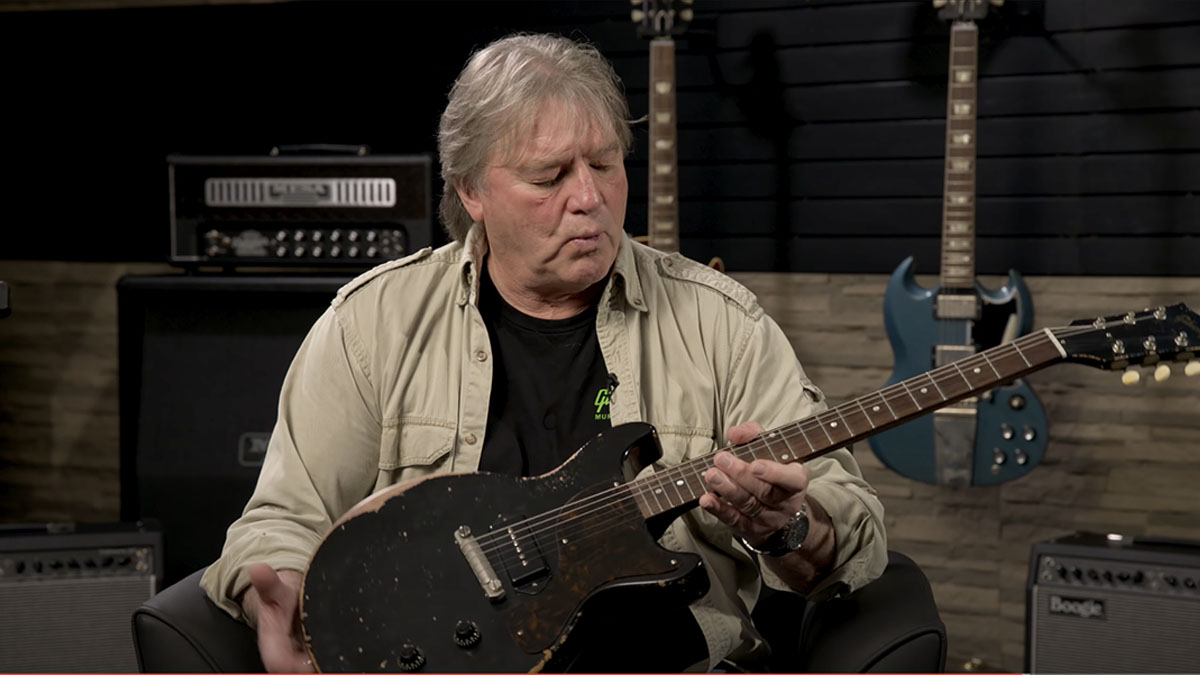
The Gibson Murphy Lab is at the forefront of artificially aging guitars and master artisan Tom Murphy is at the head of it. The Lab has now moved into acoustics, but while some of their processes remain secret, Murphy is surprisingly open in his new interview with Andertons below when it comes to some of the tools he and his personally-trained team use to create authentic looking distressing on guitars.
Full-time with Gibson's Custom Shop since 2020, Murphy himself is not a fan of heavy relic'ing on his own guitars but the tactile appeal of a worn neck is hard to deny for anyone. But anyone can't just do this kind of work, and there's specific conditions the Murphy Lab works in – including the finish their guitars start with.
"We have a very important element and that is our proprietary finish," he revealed to Guitarist magazine recently. "The finish has to go on our instruments or we can't use them in the Lab. It allows us to execute the different procedures that make a guitar look old. It wears easily. We don't peel paint off anymore – we sort of chip it off and rub it and burnish the edges."
Needless to say, if your guitar has a thicker poly finish, that kind of treatment isn't going to fly. And can end up looking anything but authentic. But what is surprising in the Andertons video with Murphy is the Tupperware box of old 'tools' he uses is filled with everyday items including a belt buckle and a bunch of keys.
They have put a lot of dents in guitars over the years
"I've had this bunch of keys for 25 years, probably," explains Murphy to Lee Anderton in the video above. "Some of those were my old truck keys, but they have put a lot of dents in guitars over the years. So now everyone in the lab has a set of these – exactly the same and the same weight. I[also] have a box twice as big as this, full of keys I bought at a flea market."
Murphy explains that using the keys to mark an electric guitar's finish is about "multiple textures" created by techniques including dropping the keys and creating a swirl pattern after softening the finish first with heat. "We can maybe use Scotch-Brite [abrasive paper], not rub it but tap on [the finish] and it will add texture," he explains.

It's this blending of textures that helps the wear to look authentic. He also marks the area on a guitar's body where the team creates "rockstar bling damage" – the kind of wear you might see on a guitar as a result of jewelry being worn on the wrist of a player's picking hand.
But the keys aren't the number one tool in Murphy's box. A specific railroad spike is his most precious damage-maker. "Very specifically, the texture on the back is bumpy but smooth," explains Murphy. "That is perfect on the back of the neck." He uses it to break the finish by tapping. "We can do that in a pattern – and you'll have a textured look instead of a peeled-off look. I used it the first time when I was replicating a [Billy Gibbons '59 Burst] Pearly Gates Les Paul. And very specifically there will be places where it's splotchy but worn through – but not all of it."
With the team constantly borrowing the magic spike, replicas had to be cast from Murphy's number one. Some may be waiting for a signature model spike they can buy, though the skills Murphy and his staff have are clearly subtle and take years to hone.
Check out the full interview above.







